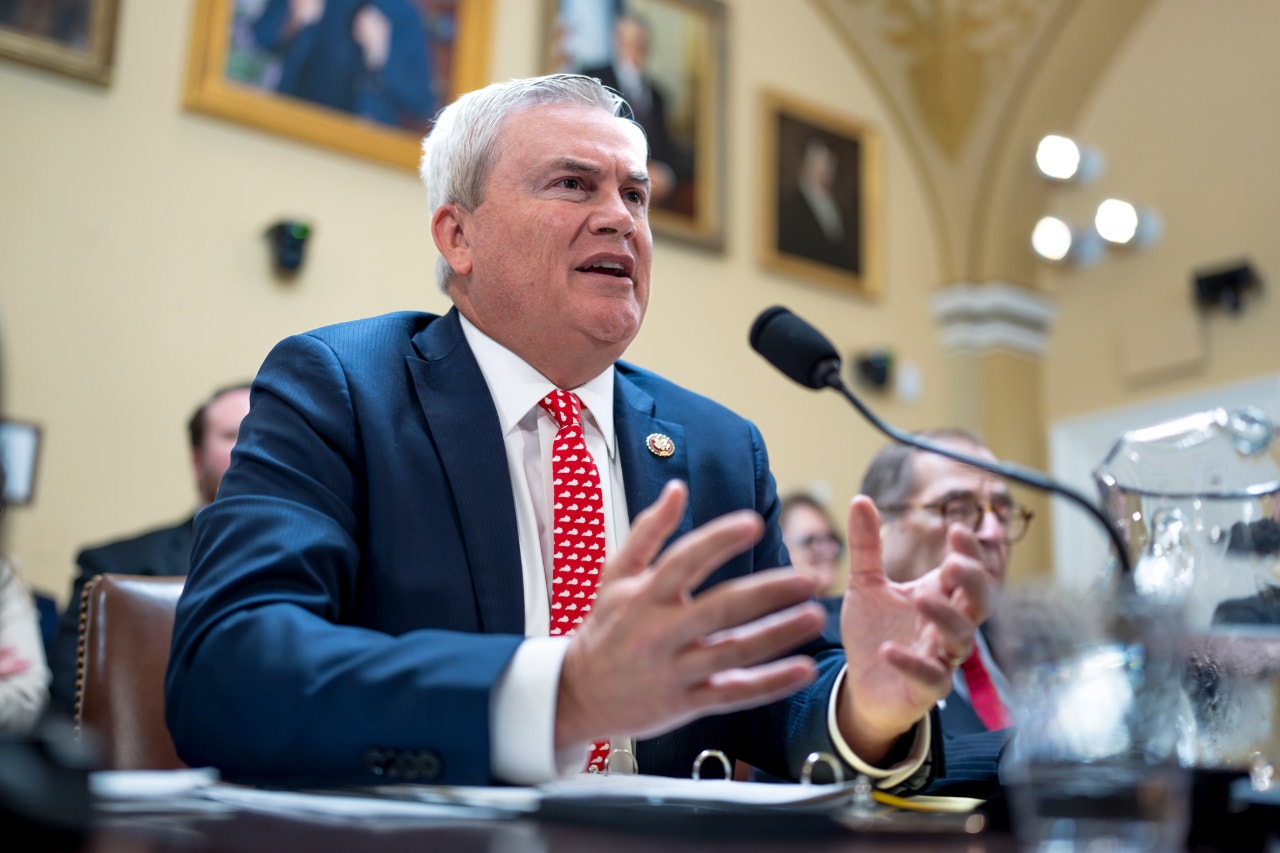Preseason favorite Texas occupies the top spot in the first Big 12 power rankings of the season.
The Longhorns, set to leave for the Southeastern Conference after this season, received 11 of a possible 14 first-place votes from a panel of 14 beat writers that regularly cover the Big 12. Oklahoma, Kansas State and UCF each received one first-place vote.
TCU, a College Football Playoff finalist a year ago, debuts in the middle of the pack after a season-opening loss to Colorado.
1. Texas
Texas wide receiver Adonai Mitchell (5) celebrates with teammates after catching a pass for a touchdown against Rice during the second half of an NCAA college football game in Austin, Texas, Saturday, Sept. 2, 2023. (AP Photo/Eric Gay)
Points: 192 (11 first-place votes)
Record: 1-0
Last week: defeated Rice, 37-10
This week: at Alabama
Comment: More efficient than exciting, the Longhorns leaned on a dominant defense to dispatch overwhelmed Rice. This week’s trip to Tuscaloosa could reveal whether Texas harbors legitimate CFP hopes.
Did you know? Texas hasn’t visited Alabama since 1902 but five Longhorn coaches – head coach Steve Sarkisian and assistants Kyle Flood, Jeff Banks, Bo Davis and AJ Milwee – have worked at Alabama in the past decade. – Thomas Jones, Austin American-Statesman
2. Oklahoma
Points: 176 (one first-place vote)
Record: 1-0
Last week: defeated Arkansas State, 73-0
This week: vs. SMU
Comment: Oklahoma overwhelmed its season-opening opponent and scored points on its first 10 possessions to secure the win over the Sun Belt Conference school. The defense only allowed 208 yards of offense and the special teams registered an 82-yard punt return for a touchdown in the win over Arkansas State.
Did you know? Oklahoma was originally scheduled to play top-ranked Georgia at home on Saturday, but the 2024 move to the Southeastern Conference canceled the home-and-home series. SMU filled the open spot last year. – Eric Bailey, Tulsa World
3. Kansas State
Points: 175 (one first-place vote)
Record: 1-0
Last week: defeated Southeast Missouri State
This week: vs. Troy
Comment: One could argue the most impressive Big 12 performance of the week belonged to the Wildcats. They dominated in every way possible against the SEMO Redhawks, with Will Howard throwing for 297 yards and making school history as a touchdown scorer. The defense also flexed its muscles with 11 tackles for loss. Nobody takes care of business against FCS teams better than Chris Klieman, who now owns a 71-6 record against them.
Did you know? Howard became the sixth quarterback in Big 12 history to pass, rush and catch touchdowns in the same touchdown. – Kellis Robinett, Wichita Eagle/Kansas City Star
4. UCF
Points: 148 (one first-place vote)
Record: 1-0
Last week: defeated Kent State, 56-6
This week: at Boise State
Comment: UCF opened its first season in the Big 12 with an emphatic win over the Golden Flashes. The Knights amassed 723 yards of offense, including a nation’s best 389 yards rushing. Quarterback John Rhys Plumlee scored 4 total touchdowns and defensive ends Josh Celiscar and Tre’mon Morris-Brash combined for 3 tackles for loss.
Did you know? UCF is making its 10th trip west of the Rockies this week when the Knights travel to Boise State on Saturday. — Matt Murschel, Orlando Sentinel
5. Kansas
Points: 125
Record: 1-0
Last week: defeated Missouri State, 48-17
This week: vs. Illinois
Comment: The Jayhawks were lucky to have retained sixth-year senior Jason Bean as their No. 2 quarterback. He got the call for an unexpected start Friday night as Jalon Daniels continued to deal with tightness in his back. Bean threw for 276 yards and a pair of touchdowns, helping KU push through a sluggish start and soundly defeat Missouri State.
Did you know? Four separate Kansas running backs — Devin Neal, Dylan McDuffie, Daniel Hishaw Jr. and Sevion Morrison — scored touchdowns in Week 1, with Neal and McDuffie each finding the end zone the first time they carried the ball. – Henry Greenstein, Lawrence Journal-World
6. Oklahoma State
Points: 111
Record: 1-0
Last week: defeated Central Arkansas, 27-13
This week: at Arizona State
Comment: Taking on an FCS opponent, the Cowboys struggled for three quarters and held a 13-7 lead early in the fourth before finding enough offensive juice to pull away.
Did you know? Coach Mike Gundy said he would use multiple quarterbacks in the opener, and he stuck to it, playing Garret Rangel, Alan Bowman and his son Gunnar Gundy four possessions each. – Scott Wright, The Oklahoman
7. TCU
TCU head coach Sonny Dykes, left, and Colorado head coach Deion Sanders shake hands after an NCAA college football game Saturday, Sept. 2, 2023, in Fort Worth, Texas. (AP Photo/LM Otero)
Points: 106
Record: 0-1
Last week: lost to Colorado, 45-42
This week: vs. Nicholls State
Comment: The Horned Frogs should get back in the win column against overmatched Nicholls after being upset by Deion Sanders and the Colorado Buffaloes.
Did you know? TCU has allowed 46.5 points per game in its last four. – Steven Johnson, Fort Worth Star-Telegram
8. Texas Tech
Points: 92
Record: 0-1
Last week: lost to Wyoming, 35-33 in 2 OT
This week: vs. Oregon
Comment: The preseason talk did not live up to the hype in Week 1. If the Red Raiders play like they did against Wyoming, Oregon may drop another 80-piece in Lubbock.
Did you know? Texas Tech hasn’t started a season 0-2 since 1990 and is in danger of snapping that streak here. – Nathan Giese, Lubbock Avalanche-Journal
9. Cincinnati
Points: 81
Record: 1-0
Last week: defeated Eastern Kentucky, 66-13
This week: at Pitt
Comment: Though it was an FCS opponent (Eastern Kentucky) the Bearcats surprised some by racking up 66 points, largely through the air. Cincinnati’s quarterbacks were 23-for-27 for 438 yards and six touchdowns with Arizona State transfer Emory Jones accounting for 345 of those yards and five scores in less than three quarters. The Bearcats also ran for 229 yards with junior Corey Kiner leading the way with 105.
Did you know? The Bearcats and Panthers haven’t met since 2012 when they were part of the Big East. The Panthers have won eight of the last 12 meetings, but Cincinnati owns the River City Rivalry Trophy having taken the last two contests. – Scott Springer, Cincinnati Enquirer
10. Houston
Points: 80
Record: 1-0
Last week: defeated UTSA, 17-14
This week: at Rice
Comment: An opportunistic defense picked off passes on three straight third-quarter drives – two by East Carolina transfer Malik Fleming – to provide a spark in a tough season-opening win. Coach Dana Holgorsen said the Cougars took a conservative approach on offense with new quarterback Donovan Smith. Houston plays crosstown rival Rice this week before opening Big 12 play against TCU.
Did you know? Known as the Bayou Bucket rivalry game. Houston and Rice have the shortest distance between two FBS programs at 4.6 miles. – Joseph Duarte, Houston Chronicle
11. Iowa State
Points: 72
Record: 1-0
Last week: defeated Northern Iowa, 30-9
This week: vs. Iowa
Comment: The Cyclones started Saturday’s win with a pick-six and peppered the rest of the game with a 56-yard field goal (fifth longest in school history) and a 39-yard punt return.
Did you know? Iowa State seeks to win consecutive games against Iowa for the first time since 2011-12 on Saturday at home. – Rob Gray, Cedar Rapids Gazette
12. BYU
(Rick Bowmer | AP) BYU tight end Isaac Rex (83) carries the ball against Sam Houston State during the second half of an NCAA college football game Saturday, Sept. 2, 2023, in Provo.
Points: 60
Record: 1-0
Last week: defeated Sam Houston, 14-0
This week: vs. Southern Utah
Comment: The offense was supposed to be the strength of BYU’s first Big 12 team. OC Aaron Roderick said his unit “upgraded at every position.” But in its debut, the offense scored just 14 points and made it past midfield three times. With 10 Power Five teams ahead, BYU needs to work out its offensive issues against SUU.
Did you know? Last week was BYU’s first defensive shutout since 2014. – Kevin Reynolds, The Salt Lake Tribune
13. Baylor
Points: 32
Record: 0-1
Last week: lost to Texas State, 42-31
This week: vs. No. 12 Utah
Comment: The Baylor offensive line only had a combined eight starts returning, and it showed, as the Bears committed six false start penalties in their season-opening loss. First-year defensive coordinator Matt Powledge returned to Waco to re-mold the defense, but Texas State carved up Baylor to the tune of 441 yards, more than all but two games a year ago. Quarterback Blake Shapen’s MCL injury only adds more question marks with a dangerous Utah team coming to town on Saturday.
Did you know? Baylor lost to Texas State for the first time in 10 total meetings between the two schools. It was also the Bears’ first-ever loss to a Sun Belt team. – Zach Smith, Waco Tribune-Herald
14. West Virginia
Points: 27
Record: 0-1
Last week: lost to Penn State, 38-15
This week: vs. Duquesne
Comment: West Virginia played like they were expected to against the No. 7 Nittany Lions, not great but not terrible. The pass defense desperately needs to get better or it will be another long year in Morgantown.
Did you know? WVU and Duquesne played every year from 1929 to 1935, their last meeting. Three of those games were at Old Mountaineer Field and four were at Forbes Field in Pittsburgh. – Cody Nespor, Morgantown Dominion Post

















/cdn.vox-cdn.com/uploads/chorus_asset/file/25697380/STK071_APPLE_A.jpg)














/cdn.vox-cdn.com/uploads/chorus_asset/file/25431700/STK201_SAM_ALTMAN_CVIRGINIA_A.jpg)





